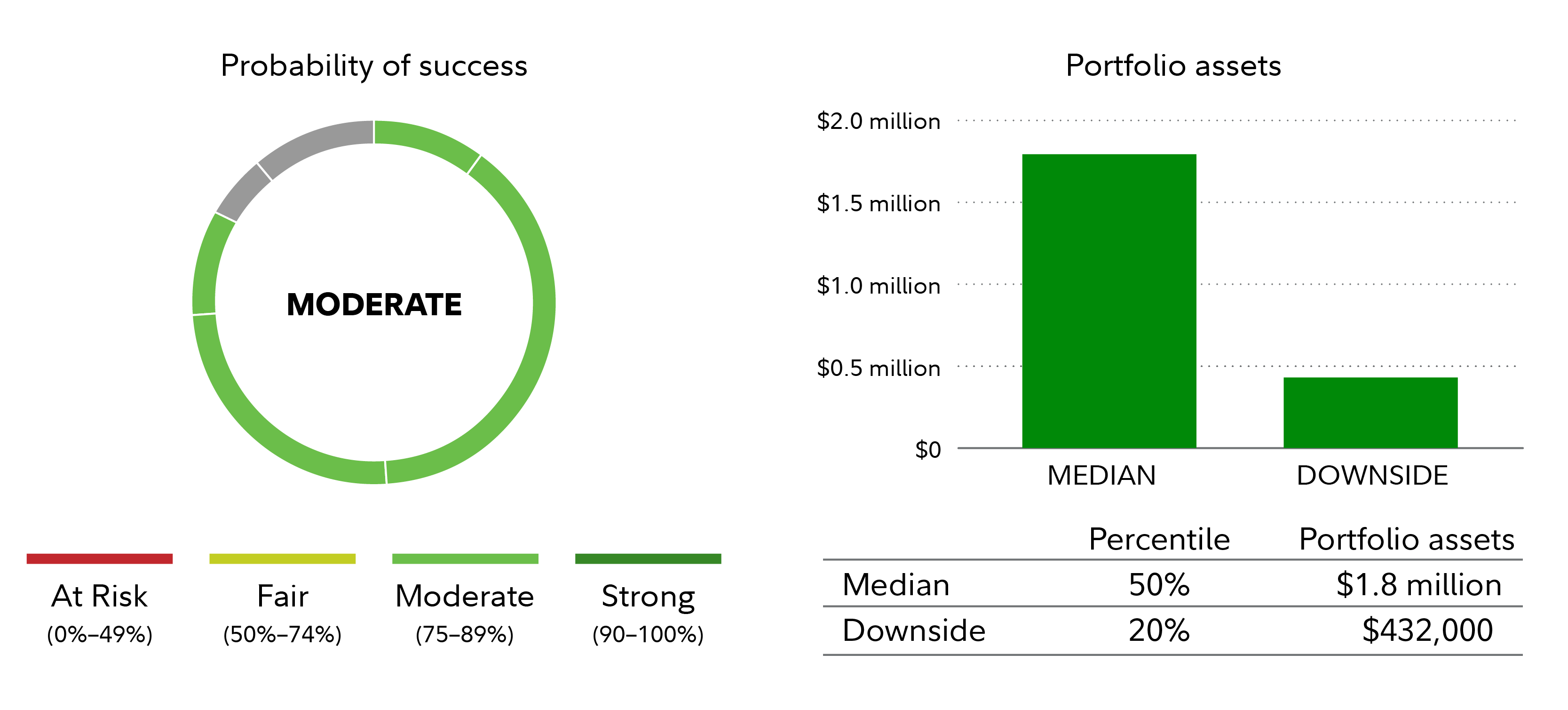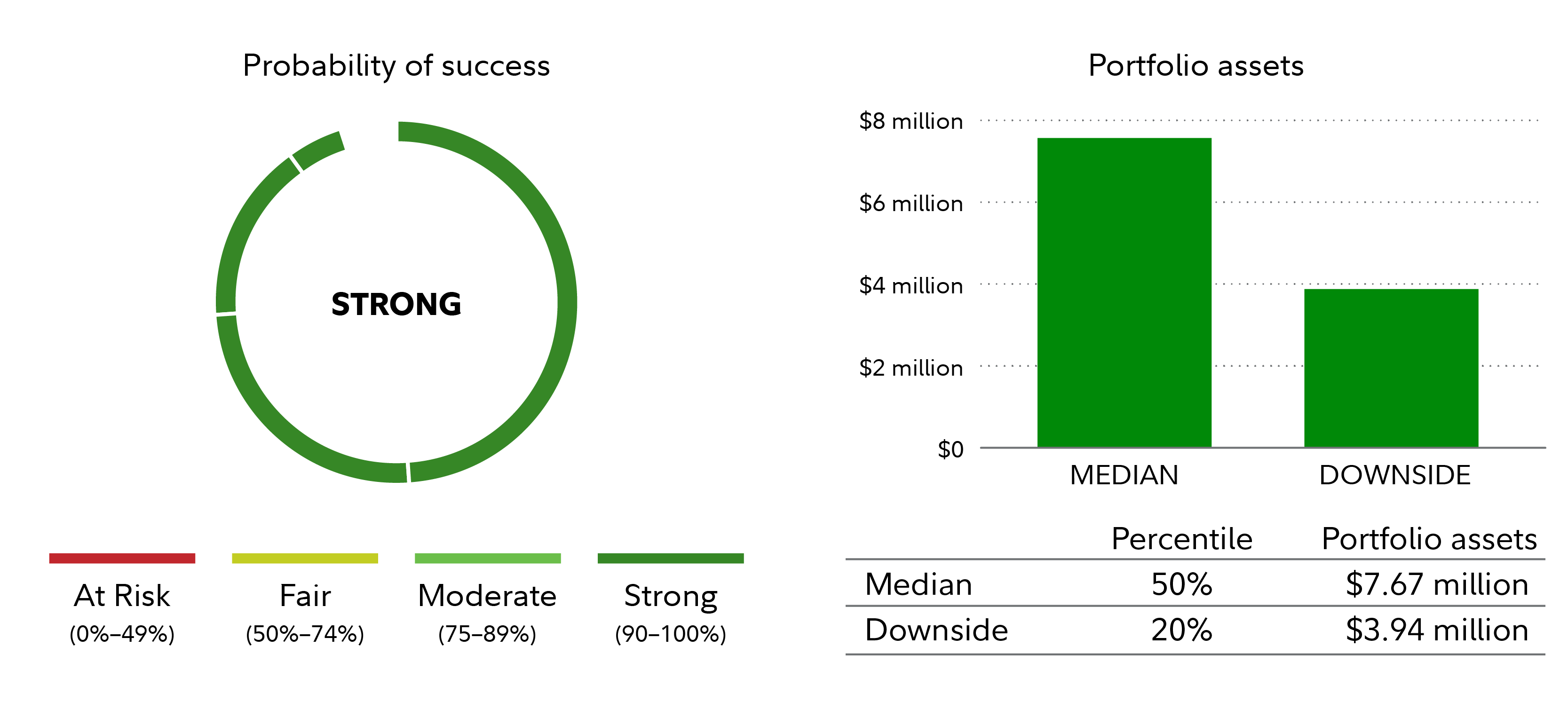Where you choose to live certainly can make a big difference in your social life, career, activities, and without question, your finances. If you are considering moving, whether that's due to a new job, retirement, or any other reason, you should definitely weigh the financial trade-offs.
For example, the cost of living in Manhattan, NY is more than twice the national average, while Harlingen, TX is more than 20% below the national average1 — according to the Community and Economic Research (CCER).
Cost of living takes into account differences in costs for housing, health care, food, taxes, and other expenses. They can vary from town to town, as well as state to state. Cost of living comparisons can also vary based on individual expenses and how the estimate is calculated.
With such big differences in cost, why not consider what a move could mean for your retirement? Working with Fidelity or another financial professional can help you understand how a shift in cost of living might change your financial picture throughout your retirement, and the legacy you may leave behind. Financial planning with a professional is one way to do this kind of analysis, and Fidelity also allows you access to our planning tools so you can do at least some of this modeling on your own.
The trade-offs
Let's look at a hypothetical situation. Henry and Linda live in San Francisco and work with a Fidelity financial professional named Daniel as part of their relationship with Fidelity.2 They tell Daniel they love San Francisco but are considering moving to Kalamazoo where several friends have retired, and the cost of living is lower, according to the CCER. Daniel illustrates the following options:
The goals
First, they discuss Henry and Linda's goals. Both are age 60, healthy, and hope to retire in 3 years. They want a retirement plan that will enable them to maintain their current active lifestyle, and leave a legacy for their 2 adult children and their families.
Daniel encourages the couple to set a goal of planning to age 96, based on longevity trends in the US, so they can be confident in their plan even if they have a long retirement.
The checkup
Next, Daniel helps Henry and Linda review their financial situation. Currently, the couple earns about $250,000 each year, before taxes, spends about $80,000 a year, and saves close to $60,000. They have managed their money well and have no debt other than a $500,000 mortgage on their San Francisco home, which is worth $800,000. They also have $1 million in savings: $510,000 in Linda's workplace retirement plan, $360,000 in Henry's IRA, plus another $130,000 in a joint account. Looking across all their accounts, their money is about 49% in US stocks, 21% in international stocks, 25% in bonds, and 5% in cash.
The options
To compare their options, Daniel starts by going through the couple's expenses and estimating how they may change in retirement. Some costs, like commuting and saving for retirement, are expected to drop. But for Henry and Linda, some other expenses will actually go up, because of the couple's plans for travel and adventure. After going through their budget, they think their overall expenses won't change much after they retire. They decide to plan for their expenses to remain around $80,000 per year if they stay in San Francisco.
Daniel uses a financial planning tool that models 1,000 different scenarios based on different market simulations. Since it's impossible to predict the actual return of the markets, the goal is to look at lots of different possible outcomes and create a plan that will work even in challenging market conditions.
If they stay in San Francisco, the illustrations suggest the couple would have a moderate chance of maintaining their lifestyle until age 96, meaning the plan succeeded in about 85% of the scenarios. In an average market, they could leave a legacy of a little over $1.8 million. Of course, sometimes markets are below average. In about 15% of the scenarios, the couple would need to cut spending or make other lifestyle changes to avoid running out of money in their portfolio. And in a challenging market (defined as the worst 20% of scenarios), the couple's retirement income would likely cover all their estimated expenses, but they could only be left with a legacy of $432,000.

For illustration only.
IMPORTANT: The projections and other information generated by eMoney Advisor regarding the likelihood of various investment outcomes are hypothetical in nature, do not reflect actual investment results, and are not guarantees of future results. The results are based upon market assumptions provided by Fidelity. Results may vary with each use and over time. eMoney Advisor is a diagnostic, web-based tool owned and maintained by eMoney Advisor, LLC, a Fidelity Investments company.
See endnotes for important details about how these values were calculated and how median and downside markets were defined.
With their San Francisco house having a $500,000 mortgage and valued at $800,000, if they sold that property and moved to Kalamazoo, they could use their $300,000 profit to purchase a house there with all cash (no mortgage). In this scenario, the illustrations suggest the couple would have a stronger likelihood of maintaining their lifestyle and leaving a legacy. Their estimated expenses, including federal and state income taxes, would drop to about $70,000 a year starting in 3 years. In an average market, the couple's legacy could grow to roughly $7.7 million. Even in a challenging market, the couple's portfolio is projected to still leave them with a healthy legacy of nearly $4 million.

For illustration only.
IMPORTANT: The projections and other information generated by eMoney Advisor regarding the likelihood of various investment outcomes are hypothetical in nature, do not reflect actual investment results, and are not guarantees of future results. The results are based upon market assumptions provided by Fidelity. Results may vary with each use and over time. eMoney Advisor is a diagnostic, web-based tool owned and maintained by eMoney Advisor, LLC, a Fidelity Investments company.
See endnotes for important details about how these values were calculated and how median and downside markets were defined.
Decision time
Henry and Linda review the numbers and consider the trade-offs. Daniel discusses some other options, like downsizing in San Francisco or moving to a nearby community, working a few additional years, or trying to save more in the final years of retirement. But Henry and Linda really want to enjoy their retirement—and leave a legacy. Plus, they think a new place sounds like fun. After considering various options, the couple decided that with the financial savings and economic climate, the move made sense for them.
The power of planning
Deciding where to live in retirement is a personal decision that can shape relationships, hobbies, and many other parts of life. Among those many considerations are your finances. It can be hard to estimate what a change in location might mean for your retirement income. You have to consider the cost of everything from housing to health care, taxes, and more. Over a long time period, these differences, and the impact on your investment portfolio, can really add up. But scenario planning as part of the financial planning process can help illustrate trade-offs, so you can feel more confident in your ultimate decision.


